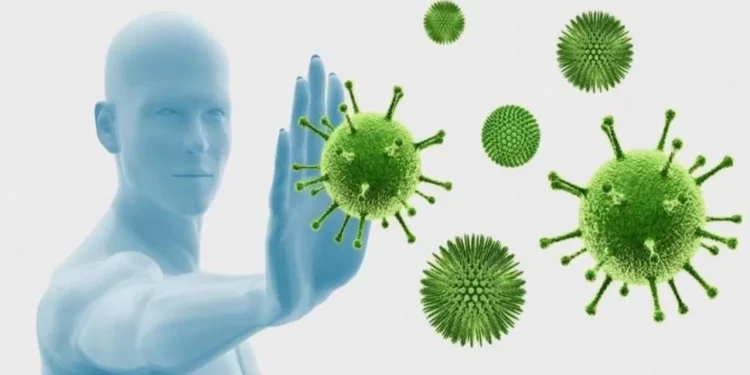These viruses also impact wildlife, contaminating water supplies and ecosystems. It is important to understand their global impact so that we can protect people and animals while safeguarding the environment.
Global impact
The coronavirus pandemic is affecting almost every country in the world. It has had a massive impact on the global economy and has left many businesses counting their losses, as governments battle to introduce new lockdown measures to tackle the spread of the virus.
While the economic impact of worldcoronaviras varies across countries, there is a common thread that is evident in all countries affected by the outbreak: the need to protect people’s health and livelihoods while ensuring they can continue working and earning an income. This means governments need to balance the need to protect their citizens’ lives against the need to ensure businesses can continue trading and generating income, particularly for those who have limited options to work remotely or at home in the face of the crisis.
In order to reduce the spread of the virus, governments have been putting in place a range of strategies to prevent further infection, including lockdown and strict enforcement. In the early stages of the crisis, these measures were highly successful and helped to limit spread, although they were not without their drawbacks.
A major issue with the implementation of these measures was that they imposed a degree of uncertainty on citizens’ lives. This impacted their ability to work and earn an income, while also limiting their access to essential services such as transportation and medical care.
This led to a significant loss of revenue for the affected countries, and was exacerbated by reduced tourism due to flight restrictions. As a result, governments have been forced to cut back on spending, which has put pressure on national economies.
The virus has had a particularly disproportionate impact on low- and lower-middle-income countries, as their economies tend to be more vulnerable to economic shocks. According to the Wellcome Global Monitor 2020: Covid-19 report, over half of the workers in these countries lost their jobs or business because of the pandemic, compared with just 10% of people in high-income nations.
The virus is still spreading and will continue to have a negative impact on the world economy until we find ways to combat it and get lifesaving tests, treatments and vaccines to the front line. That is why the Access to Covid-19 Tools (ACT) Accelerator is working with scientists, businesses and civil society to get lifesaving solutions to the front lines of the battle.
Symptoms
Worldcoronaviras is a novel coronavirus that emerged in China in December 2019. It has caused worldwide flare-ups of respiratory ailment and is spreading rapidly. It is one of the most significant and dangerous viruses in the world, causing serious illness and bringing social and economic disruption around the globe.
The new coronavirus is spread from person to person through respiratory droplets that people cough, sneeze or talk into the air. Inhalation of these droplets can cause serious illnesses and may result in death.
Most infected people will recover with no need for treatment, but the virus can cause severe symptoms. These include fever, cough and shortness of breath. In more severe cases, the infection can lead to pneumonia, which is a life-threatening lung infection that can be deadly.
In some cases, the infection can affect other organs and tissues. In extreme cases, it can cause heart disease and encephalitis. It can also cause serious problems for children, such as brain damage and learning disabilities.
To help prevent infection, the CDC recommends that people who suspect they have COVID-19 stay home from work or school and keep their distance from other people. They should also wear a mask whenever they are in contact with others and test for the virus every day until they have been free of symptoms for at least five days.
Symptoms of COVID-19 are similar to the symptoms of other coronaviruses, such as SARS and MERS. They can occur 2-14 days after exposure to the virus and include fever, cough and shortness of breath. They may also include muscle or body aches, headache, sore throat, congestion or runny nose, nausea and vomiting, diarrhea and fatigue.
The symptoms of COVID-19 can last up to two weeks, but people usually start to feel better after a week or so. If you are experiencing these symptoms, call your doctor or visit the nearest hospital to get medical care.
The most common risk factors for COVID-19 are older adults and people with chronic medical conditions, such as heart disease or lung disease. They also have a higher chance of being diagnosed with the disease because they are more likely to be exposed to the virus through breathing in respiratory droplets.
Transmission
Worldcoronaviras (WCVs) are a family of dangerous viruses that cause a range of diseases in humans. They are also causing widespread damage to wildlife and contaminating water supplies and ecosystems around the world.
These viruses are extremely pathogenic, meaning they can cause severe respiratory illness and even death in some cases. They can also affect a person’s nervous system, triggering disorders like chronic hepatitis infections and neurological problems such as meningitis.
The most common way to get infected with a WCV is through contact with respiratory droplets that fall from an infected person’s cough or sneeze. Infection can also occur through contact with surfaces contaminated by the virus, such as doorknobs or countertops.
A COVID-19 infection is contagious for about 10 days after symptoms start, so it’s important to stay away from others during this time. This is especially important if you’re pregnant, breastfeeding, or have a weakened immune system.
Symptoms include fever, body aches, headaches and muscle pain. You can also have a cough, runny nose or swollen glands.
It’s also important to avoid sharing food or drink with someone who is sick. It’s also a good idea to wash your hands frequently with soap and water.
Another thing you should do is use a mask when you’re around other people. It’s a good idea to wear one when you’re in crowded spaces, such as hospitals or schools.
When you’re sick with a coronavirus, it’s very important to stay home and avoid public places until you’ve been diagnosed and given the OK by your doctor. You should also avoid traveling if you’re sick with a coronavirus.
This can be a challenge for many families, particularly those who move frequently or are struggling financially. It’s also difficult for people to attend school or work outside of their normal routine if they’re infected with a coronavirus.
The best way to prevent a WCV is to make sure that you’re properly protected and have the right medication. It’s also important to know what to do in the case of an outbreak so that you can be prepared.
Prevention
Worldcoronaviras are highly pathogenic viruses that can cause serious respiratory illness and lead to pneumonia and death. In addition, they can trigger chronic hepatitis infections and neurological disorders such as meningitis.
The global impact of worldcoronaviras has been extensive, causing significant social and economic disruption. These impacts have been especially devastating for developing countries, as these nations typically have weaker public health systems and rely heavily on tourism for revenue.
Fortunately, governments have taken several steps to prevent the spread of worldcoronaviras and protect their citizens. Some of these strategies include travel restrictions and implementing vaccines. These strategies have been controversial, however, and have caused political debates around the globe.
In order to prevent the spread of worldcoronaviras, it is essential that everyone stay informed about the virus. This includes being aware of the symptoms, how to get vaccinated, and when it is safe to travel to affected areas.
Worldcoronaviras can be spread through contact with respiratory droplets that come from an infected person. These droplets can land in the mouth or nose of someone who is nearby and can be inhaled into the lungs. It can also be transferred from a surface that is contaminated with the virus to someone who touches it.
People who become infected with worldcoronaviras may experience flu-like symptoms such as fever, cough, and shortness of breath. These symptoms can start 2 to 14 days after a person is infected with the virus.
These symptoms can lead to severe respiratory illnesses such as pneumonia and ARDS, or they can be milder and involve symptoms like fatigue, headache, sore throat, new loss of taste or smell, or congestion and runny nose. In very severe cases, these symptoms can cause organ failure and death.
While preventing the spread of worldcoronaviras is important, it is equally vital that people seek treatment when they feel ill. This will reduce the risk of more serious health complications and increase their chances of survival.
As worldcoronaviras continues to ravage the world, it is critical that governments invest in new strategies and policies to protect their populations from future outbreaks. This will be crucial to protecting the health of their people and ensuring long-term prosperity in the face of a potentially devastating pandemic.



